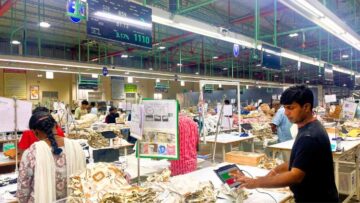
The Bangladesh Economic Zones Authority (Beza) has announced an ambitious three-phase implementation plan aimed at establishing economic zones across the country. This initiative, part of the draft National Master Plan of Economic Zones, seeks to promote balanced industrialisation, job creation, and sustainable infrastructure development while attracting both local and foreign investments.
During a recent workshop titled Economic Zone Prioritisation and Phasing, Offsite Infrastructure Planning and Development Mechanism, Beza officials outlined their strategy, which includes the establishment of 20 economic zones by 2046. The phased approach is designed to optimise resources and address challenges related to land acquisition, infrastructure readiness, and investor confidence, ensuring a structured and sustainable development process.
Since the launch of the industrialisation plan in 2015, only 10 economic zones have become operational. Among these, two are government-run—namely the National Economic Zone in Chittagong and the Sreehatta Economic Zone in Sylhet—while the remaining eight are managed by private entities. Notably, these private zones include City Economic Zone, Meghna Industrial Economic Zone, and several others, which collectively employ around 60,000 individuals, with a significant portion working in the RMG sector.
At the workshop, Beza Executive Chairman Ashik Chowdhury emphasised the importance of the master plan in driving growth and innovation within the RMG industry. “We are creating a space where businesses can thrive, particularly in sectors like textiles, which have a low capital requirement and high employment potential,” he stated. “Our goal is not just to build economic zones; we aim to shape the future of Bangladesh’s industrial landscape, especially in RMG.”
The first phase of the plan, targeting the fiscal years 2025 to 2030, will prioritise zones already in development and those with high investor interest. Key infrastructure developments, including roads, power supply, and water management, will be implemented to attract investments in the RMG sector, which has long been a cornerstone of Bangladesh’s economy.
Chowdhury outlined that by 2030, these initial zones are projected to create over 300,000 jobs, significantly contributing to export earnings and further solidifying Bangladesh’s position in global trade, particularly in the RMG market.
The second phase, scheduled from FY ’31 to FY ’35, will focus on introducing large-scale industries, including the RMG sector’s expansion into automobile manufacturing and pharmaceuticals. This phase will enhance connectivity through railways and expressways while promoting public-private partnerships.
The final phase, extending from FY ’36 to FY ’46, aspires to transform Bangladesh into a global industrial hub, incorporating AI-driven logistics and eco-friendly initiatives. This vision includes the establishment of green economic zones that embrace renewable energy and sustainable practices, allowing the RMG sector to thrive in an increasingly competitive landscape.
Despite the promising outlook, challenges such as land acquisition and environmental regulations remain. However, Beza’s master plan aims to position Bangladesh as a regional industrial powerhouse, creating millions of jobs and diversifying the economy beyond Dhaka and Chittagong, with a strong focus on the RMG sector.
In support of these efforts, Gayle Martin, Country Director of the World Bank, emphasised the importance of rationalising economic policies to foster sustainable growth, particularly in the RMG industry. “A well-functioning private sector is crucial for innovation, entrepreneurship, and job creation,” she noted, reinforcing the World Bank’s commitment to supporting Bangladesh’s economic progress.






